GPX File: salzburg-venice.gpx
My friends and I decided to travel by bike from Salzburg to Venice as a one-week trip this summer (2021).
Most routes online recommend going to Grado which lies further in the east, closer to Traviso and Slovenia.
Here, I want to give some caveats and information about taking the route to Venice instead of Grado.
The Route
Salzburg → Venzone (Days 1-3)
The route mostly follows the Alpe Adria Radweg until Venzone, a small Italian town at the foot of the alps.
We took more or less two "Etappen" (stages) each day, usually doing a short stop at the Etappe in between. As a consequence, we travelled about 100km per day which was exhausting but doable.
During the first days we stuck to the route:
-
Day 1: Salzburg → Bischofshofen → Bad Hofgastein -
99 km -
Day 2: Bad Hofgastein → Bad Gastein → Tauerntunnel → Spittal → Villach -
97 km -
Day 3: Villach → Tarviso → Venzone (→ Gemona del Friuli) -
96 km
End of Day 3 - Tarviso → Gemona del Friuli
After having crossed the Italian border we headed to Tarviso, where we ate some ice cream.

From there on, the route becomes very easy, as it mainly goes downhill next to the beginning of the Tagliamento river. In this area, there are many mountain tunnels for pedestrians and bikers, which were unexpectedly cold. Take a sweater with you if you don't want to catch a cold.
Before Venzone, there is a point where the bike trail suddenly stops (where the A23 crosses the SS13).
Until this point, the whole route from Salzburg was mostly on designated bike trails. From this point on, we had to drive on speedways more than we wished for. So we had to switch to the fast road there which was quite stressful. It might be useful to look out for routes on the other side of the river which are more suited for bikes the next time.
Instead of stopping in Venzone, which by the way is a beautiful, historic city, we stayed in Gemona del Friuli. Gemona is a larger city and also contains numerous interesting historic sites.
We had dinner at a place called Hotel Willy, which had great pizza (in my opinion the best I ate during the trip) for a really good price.
Day 4 - Gemona → Spilimbergo → Caorle (104km)
From this day on, we parted from the Alpe Adria route, as our goal was Venice and not Grado.
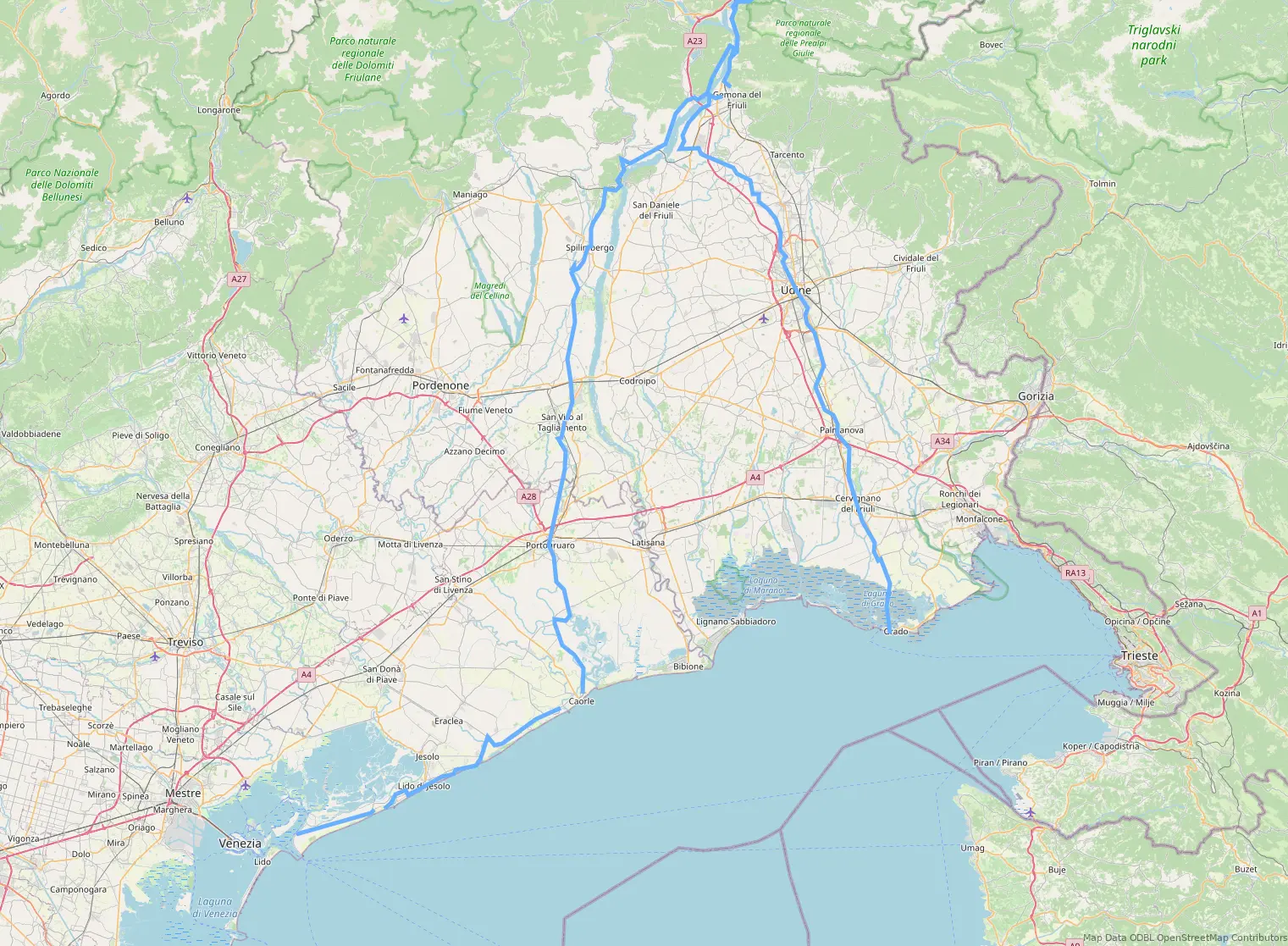
As a temporary goal for the evening, we chose a place called Caorle, a small, historic coastal town with a lagoon.
To get there, you can travel on the western side of the Tagliamento river. This route had some slopes and a big part of it is on the speedway.
As a reward, you can stop at the beautiful Lago di Cornino.
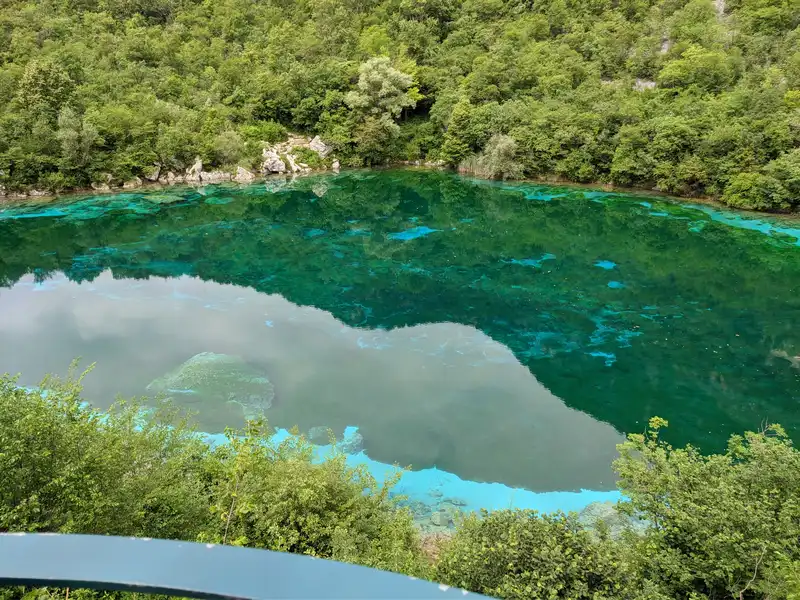
After that, the road goes downhill into the flat Italian countryside. There are still many small villages similar to the ones from the mountainside: old, stone-walled and with many narrow streets. In addition, there is a lot of farmland and little rivers crossing the countryside. Here, a bigger city where one can take a rest is Spilimbergo.
Most of the time after that, you will be driving along the speedway with cars driving next to you with a high velocity. It's sad that there aren't more bicycle lanes in this part of Italy.
Before entering Caorle, it is important to find a good route to go. Caorle is surrounded by multiple rivers and the only way to enter it is via bridges or ferries.
We did the mistake of driving into, what seemed to be, the right direction without checking on the map.
This lead us to a dead-end in front of the Isola dei Pescatori.
After talking to some locals we found out that we could call a number to get a small boat to drive us across the small river to the other side.
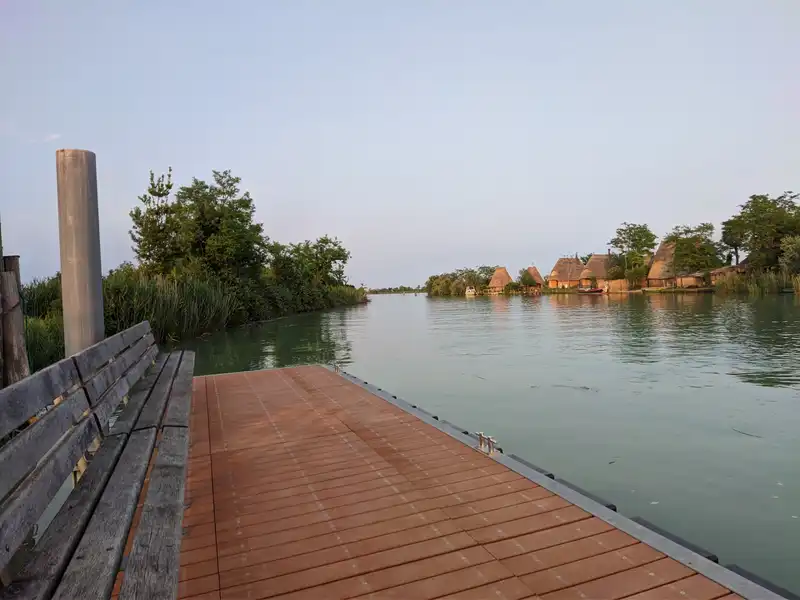

Caorle is a very touristic city with a lot of attractions, restaurants and a big beach (sadly, it's a private beach with just small part where you can go bathing without paying). The town is a big contrast to the smaller, non-touristic villages before Caorle.
Day 5 - Caorle → Lido di Jesolo → Venice (42km)
The last part of the tour goes along the coast straight to Venice. This route has the advantage that you save a lot of distance by going south of the Venice lagoon instead of driving around it towards mainland Venice. It's only about 40km and partly on bicycle lanes, so a very relaxing finish to the tour. Also, if you start in the morning, you can spend most of your afternoon in Venice!
At the beginning, one has to be careful to plan the route ahead as the amount of rivers surrounding Caorle can quickly lead to dead-ends. Then, for a long time, you can drive on bike lanes parallel to the coast (the coast constists exlusively of beaches, so you cannot drive there unfortunately.)
After a while you will reach Lido di Jesolo, an even more touristic area where you have to be careful not to run over any tourists. From there, you should try to drive towards Punta Sabbioni, where you can take ferries to old town Venice (where you shouldn't bring you bikes, see below).
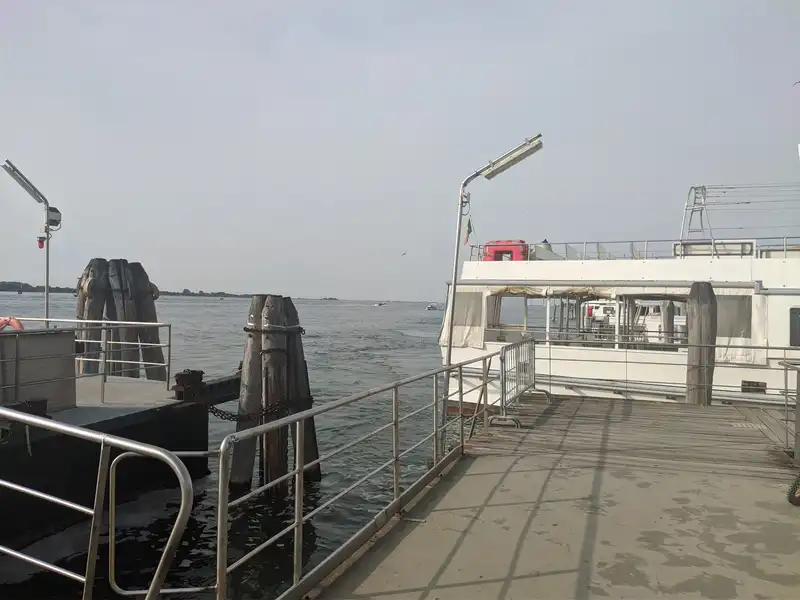
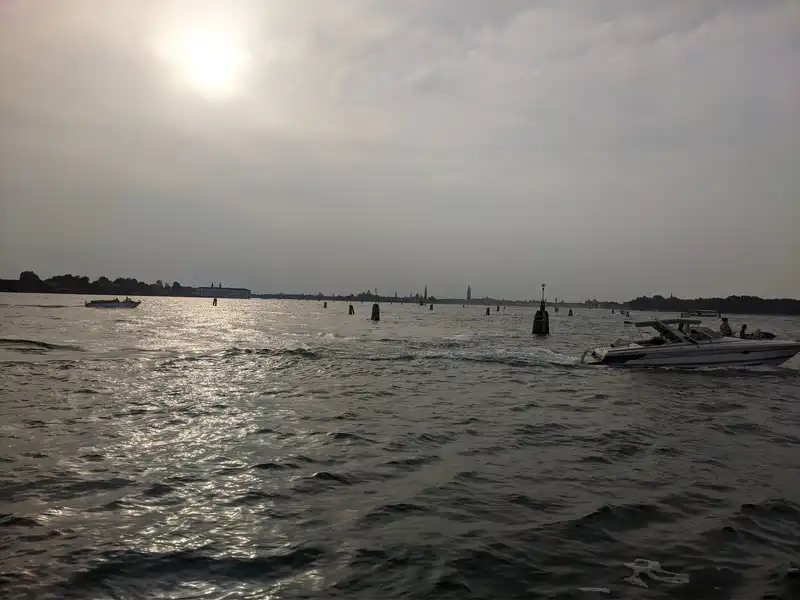

Venice
Bikes in Venice
Bikes are not allowed in most old town Venice (neither driving nor pushing). The fine for carrying a bike is 100€.
Consequently, you will have to leave your bike somewhere outside of the prohibited zone. One option is the Bici Park at the Piazzale Roma (right next to the train station in the old town, one of the few places where bikes are allowed) which is quite expensive at 10€ per 24h.
To get to the Piazzale Roma from Punta Sabbioni, you will have to take a ferry. The ferry line that we used allowed up to four bikes per trip (although this also seemed to depend on the mood of the ferry captain).
Other Rules
You should also be aware of the other special rules in Venice. You are not allowed to, amongst other things:
- Sit down somewhere in public and eat your own food (
100-200€) - Swim in /jump into the canals (
350€) - Litter (
350€) - Walk around bare-chested (
250€) - Feed seagulls/pidgeons (
25-500€)